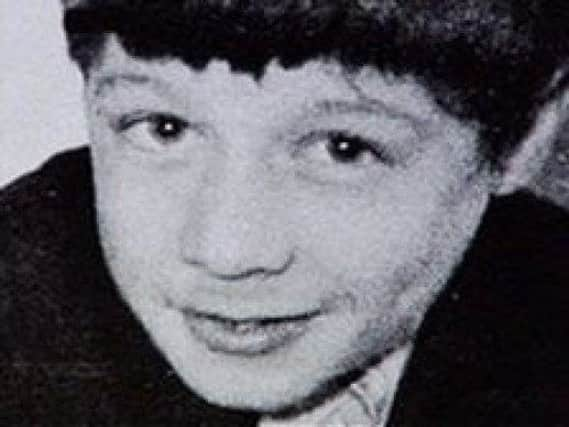Daniel Hegarty case: decision not to prosecute British soldier '˜perverse'


A leading barrister representing relatives of Daniel Hegarty argued that expert evidence completely refutes claims the bullets were fired in self-defence.
Michael Mansfield QC said: “The scientists have sealed the case for the family that this was an unlawful killing.”
Advertisement
Hide AdAdvertisement
Hide AdFifteen-year-old Daniel was unarmed when he was shot twice in the head during an army operation in the Creggan area of the city in July 1972.
His cousin Christopher (16) also sustained a bullet wound to the head but survived.
The shootings occurred at the height of the Troubles as British troops were deployed in Derry in an attempt to clear so-called no-go areas.
In 2011, an inquest jury unanimously found Daniel posed no risk and had been shot without warning, prompting the coroner to refer the case back to the Public Prosecution Service.
Advertisement
Hide AdAdvertisement
Hide AdBut, in March last year, it was decided not to pursue charges against Soldier B, who fired the fatal rounds, on the basis of no reasonable prospect of a conviction.
According to the PPS, forensic experts were unable to state that ballistics evidence is inconsistent with Soldier B’s account of the circumstances in which he fired.
Daniel’s sister, Margaret Brady, is now seeking to judicially review the Director of Public Prosecutions over that decision.
“The principal points relate to what we have characterised as either perversity or irrationality,” Mr Mansfield told judges.
Advertisement
Hide AdAdvertisement
Hide AdThe court heard that Soldier B fired from a distance of less than 10 feet.
In a statement, he claimed to have pulled the trigger on the machine gun while it was on the ground.
“That is a bundle of lies because of the distance element,” counsel for the family insisted.
“If it was resting on the ground, it wouldn’t have caused the injuries (it did).”
Advertisement
Hide AdAdvertisement
Hide AdThe soldier’s account, Mr Mansfield contended, was part of a contrivance to suggest a fear of a non-existent threat.
Claiming the Director’s conclusions could not be justified, he continued: “There’s nothing left of self-defence, and there’s every reasonable prospect of gaining a conviction in this case were it to be prosecuted. This was a soldier firing at point blank range and firing in an aimed fashion.
“The only way he could have aimed is if he had got the weapon off the ground, at least to shoulder level, so he could hit the head from a distance of six-ten feet.”
Urging the court to grant leave to apply for a judicial review, the barrister further alleged that his client was subjected to an “unconscionable” four-year delay before discovering no prosecution would take place.
Advertisement
Hide AdAdvertisement
Hide Ad“This is a matter which has been a running sore for a number of years for a perfectly law-abiding family who have toiled with this matter and been extraordinarily patient,” he added.
Tony McGleenan QC, for the Director, countered that the case was subjected to close forensic analysis, with two expert reports and advice from senior counsel.
“It’s a matter that has been subject to scrupulous and careful scrutiny,” he told the court.
Mr McGleenan also argued that one of the forensic scientists “modified” the position he took at the inquest after studying another statement from Soldier B.
Advertisement
Hide AdAdvertisement
Hide Ad“He says it’s possible this account could be consistent with the forensic evidence,” counsel said.
Proceedings were adjourned, however, after judges decided they needed to see the experts full reports.